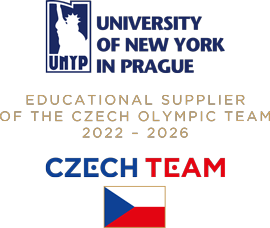The universal component of the hiring process – Part one: Who gets an interview?

David Starr-Glass MBA, M.Sc., M.Ed.
Mentor, International Programs (Prague), State University of New York – Empire State College
Hiring new employees is always a tricky business. When you look around an organization and see all the bright, productive, and innovative people there, you might think that the hiring process works exceptionally well.
In the first part of this article, we learned that hiring new employees is a tricky business, with no universally valid or reliable way of selecting the best candidate every time.
But if you take a closer look, you will notice many people who are less than bright, obviously unproductive, and who seem to add little value. There are lots of people like that in every organization, and they were hired alongside the smart and prolific team players. There are no certainties in the hiring process; no perfect way to consistently select ideal people.
Of course, HR departments are aware of this problem, and they struggle mightily to find the best new hires. Many different approaches are used, depending on the country and the organization. Some use Assessment Centers, where candidates undergo a number of tests, work simulations, and group projects – all of which are analyzed, reviewed, and used to generate candidate profiles. Other HR departments are less conventional. A few place great faith on graphology – analysis of the candidate’s handwriting. Believe it or not, one or two companies even use astrology, asking candidates for details of the exact time and place of their birth and the consulting astrological charts. Think about that for a moment. Remember that you are part of the selection process – would you want to work for an organization that used the loop of your “y” or the fact that you are a Taurus as a hiring criterion?
There are clearly some strange things going on out there in the real world, which only goes to emphasize the challenge: hiring new employees is a tricky business, and there is no single statistically valid and reliable approach that consistently selects the best candidates. However, despite its limited reliability and validity, there is one hiring tactic that every organization uses. This is of course the employment interview,and there are two important things that you need to know about it: (a) who is selected for the interview; and (b) the dynamics of the interview. In this article, we consider the first issue. In the second article in this series, we will look at the dynamics of the interview itself.
The HR department advertises a job vacancy, listing the required qualifications and necessary experience. Interested prospective candidates complete an application form, write a cover letter, and attach their CV (curriculum vitae, also known as a résumé– in Europe the terms are essentially synonymous). Suppose that the HR department receives 120 applications for a job vacancy, or for a newly created position. The hiring process is like a funnel: many applications go in at the top, a smaller number of qualified candidates come out at the bottom. The crucial question is: How do they select that small number of candidates that will undergo further tests and eventually be interviewed?
There are two answers to this question: the one that you will learn in your HR Management course, and the one that most real people use in the wider world. The theoretical approach is that organizations use (or should use) a compensatory selectionprocess. Positive values are assigned for candidate strengths; negative values for weaknesses; weights for each factor are determined; values are then multiplied by these weights; and finally everything is added together. The candidates with the highest overall scores move forward; the rest are rejected. It sounds very logical and, in a sense, very fair and democratic: good features compensate for poorer features; strengths balance out weaknesses.
The problem is that in the real world, most HR departments do not actually do this. What they do is simpler, faster, and neither fair nor democratic. They have 120 applications and they want ten candidates to proceed to the next stage. Instead of picking the ten best candidates (through compensatory selection calculations), they eliminate the 110 worst candidates. That may sound the same, but it is not, and the difference is important. The second method focuses on single factors that disqualify candidates immediately, even though these candidates could have other strengths. The truth is that it is much easier to simply reject candidates on a single flaw. Once they have been rejected, they are out of the selection pool – they are no longer considered.
The first step on the path to an interview is to avoid premature rejection. This means that your application form, cover letter and CV must be perfect.
The finest CV and the best written cover letter will never get you a job. What they can do is to get you to the employment interview stage of the selection process. A bad CV or inappropriate cover letter will stop the process cold: you will end up in the reject pile, instantly forgotten.
- Use the resources below to craft a short high-impact CV. No spelling errors, grammatical mistakes, or unsubstantiated claims. Keep it simple and professional. Don’t even consider printing gimmicks; your CV on bright green paper will certainly attract attention, but for the wrong reasons. Don’t use photos; including them will only signal that you are unaware of the legal and ethical issues of equal opportunity employment, discrimination, etc. You do not want to highlight your lack of understanding.
- Most CVs (about 80% by current estimates) significantly over-state or over-emphasize achievements. Typically, previous job titles are rewritten to sound more important and job descriptions are inflated. Everybody knows this, and almost everybody does it. There is nothing wrong with presenting yourself as positively and optimistically as you can. However, there are clear limits: never lie, never fabricate, and never claim qualifications or experience that you do not have. An over-inflated or fraudulent CV might get you an employment interview, but when the HR department does its pre-employment background check, things will end very, very badly.
- Don’t send photocopied letters of recommendation or a massive portfolio of your work. Nobody will read them, and they may suggest that you are too confident, over-presumptuous, or simply ignorant of the process. By the way, non-specific letters of recommendation have no value in the hiring process. If it is appropriate, identify people who have offered to provide you with recommendations. Future employers will follow up with this if and when they think it necessary. They will also have their own specific formats and questions that they want your referee to answer.
- Never send generic cover letters to “whom it may concern”. Craft your cover letter individually and specifically to address the organization and the position for which you are applying. Find out the name of the person in the HR department who is leading the search. If you do not take the time and effort to show that you have researched the organization and the position, the HR department will not take the time and effort to read your application. Your CV will go directly to the reject pile.
- Remember that CVs and cover letters are living documents. They are constantly changed, updated, refined, and tailored for the specific purpose for which they are intended. Create different versions and craft the most appropriate one for the specific job that you are applying for. Most CVs are sent by email these days, so make sure that the format of the document is “email friendly”, can be easily opened, and is well-constructed and professional.
The initial objective is to survive the first step of the hiring process and to secure an employment interview. In the second part of this series we will discuss what to expect and what to do at that interview. But remember, a thoughtfully-crafted CV will at best get you an interview; a poorly-crafted CV will eliminate you before you have the chance to say a single word.
Recommended Resources
McGill University (2015). Writing a CV: Marketing your skills. Montreal, Canada: McGill Career Planning Services. Available at http://www.mcgill.ca/caps/sites/mcgill.ca.caps/files/guide_cv.pdf
McGill University (2015). Writing a cover letter: Customizing your application. Montreal, Canada: McGill Career Planning Services. Available at http://www.mcgill.ca/caps/sites/mcgill.ca.caps/files/guide_coverletter.pdf
Swarthmore College (2013). Guide to writing resumes, CVs, and cover letters. Swarthmore, PA: Swarthmore College Career Services. Available at http://www.swarthmore.edu/Documents/administration/careerservices/resume.pdf
University of Southern California (2015). Effective resumes and cover letters. Los Angeles, CA: USC Career Center. Available at https://careers.usc.edu/docs/handouts/Resume_Booklet_Small.pdf
Related Articles
UNYP Chronicle Newsletter
The e-mail address you provide will be used only to send you the newsletter. Your privacy is important to us.
For more information download our UNYP Brochure.

Contacts
University of New York in Prague
Londýnská 41, 120 00 Praha
ID no: 25676598
Phone:
+420 224 221 261
![]() Skype
Skype
Email: unyp@unyp.cz







